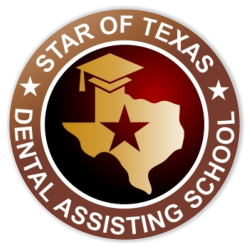Every dentist has experienced it: a choppy hygiene report that creates chaos, patient confusion and a ripple effect of schedule delays. When it becomes chronic, it has a deleterious effect on your entire operation. How to fix this common but potentially dire problem? As with just about every aspect of practice development, consistent process is key.
An average hygiene-recall check should take roughly three to five minutes of the doctor’s time. It’s thus crucial for the hygienist to smoothly transfer to the dentist the information she has gathered from the patient in the previous 45 minutes or so.
The optimal system is one I’ve developed called “Prompting the Doctor.” It’s a concrete, repeatable way for hygienist and dentist to communicate clearly in the patient’s presence. Establishing this kind of succinct dialogue will naturally make the patient more secure about his or her treatment and engender a strong bond of trust with you and your staff.
Prompting the Doctor consists of four steps. The first begins when the dentist enters the hygiene operatory. The hygienist should state the patient’s name immediately – and once the gloves are on, casually drop in some personal information: “Doctor, Mrs. Smith just returned from two weeks in Mexico.”
Brief and subtle as this is, it helps establish an immediate rapport and quickly puts the patient at ease in the doctor’s presence.
Next, comes a medical-history review – a summary that encompasses a patient’s overall health, especially any changes since the last visit. “Mrs. Smith is exhibiting signs of early-onset diabetes, which she controls for now with diet alterations. No other changes noted.”
Step three concerns the patient’s soft-tissue status. Gingivitis? Early, moderate or advanced periodontal disease?
“Mrs. Smith’s exam indicates possible early periodontal disease. I’ve recommended, upon your confirmation, that she return for half-mouth gum therapy: three appointments over three weeks and a fourth a month later.”
Finally, the hard-tissue review, quadrant by quadrant, with the hygienist describing anything the doctor needs to pay attention to. Throughout, it’s important that the hygienist never say that she saw nothing during her cleaning; the patient will be uncomfortable if the dentist then notices a problem.
By this point, it’s important for the hygienist to begin to bring the exam to a close. If further simple treatment is needed – one tooth or one quadrant, say – ask Mrs. Smith if she has any other questions, then transfer her to your financial-treatment coordinator. If more complex treatment is called for, the dentist must let the patient know he’ll need time to “work up” his case and have Mrs. Smith schedule a follow-up consultation.
The advantage of the Prompting the Doctor system is that the patient will be both impressed with the smooth delivery of information and confident she has been treated by a cohesive dental team.
Managing the hygiene exam and post-exam dentist visit (as well as ridding your vocabulary of dental jargon while the patient is present) will increase patient confidence — and help your practice run more smoothly all day long.
If you are interested in becoming a dental assistant, Star of Texas Dental Assisting School can help give you the education needed to excel in the field.
We are currently enrolling for our next session starting on September 24th! Contact one of our Admissions Representatives today at (512) 487-1547 or operations@staroftexasdentalassistingschool.com

